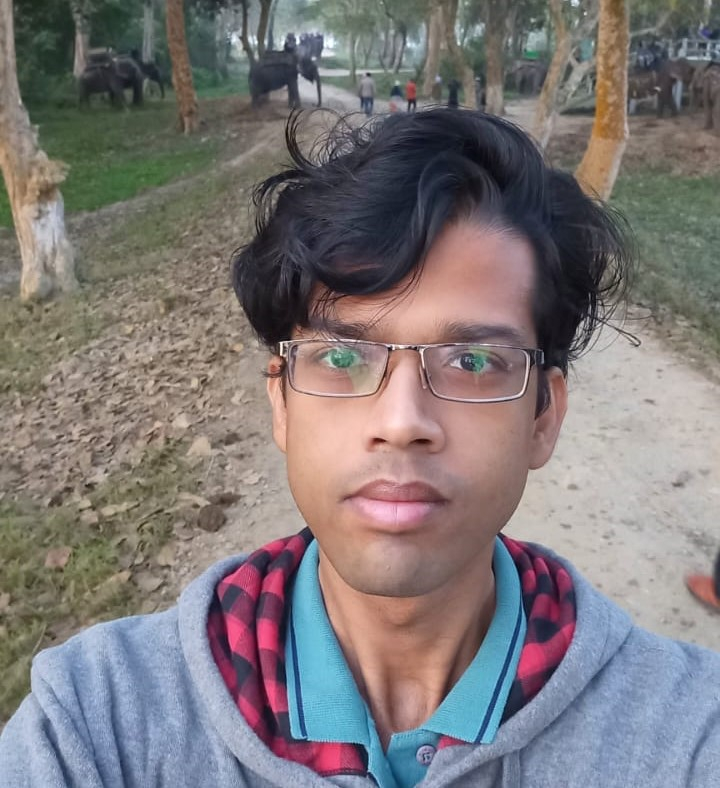CS Ph.D. Student Advances AI Agent Research in the Real World
While most artificial intelligence (AI) applications today focus on generating text or identifying images, one University of Maryland Ph.D. student is exploring how AI can be designed to act.
Saptarashmi Bandyopadhyay, a fifth-year doctoral student in the Department of Computer Science, has concentrated his research on AI agents—systems that operate autonomously in dynamic environments. From modeling deforestation in Indonesia to analyzing medical scans and helping to optimize disaster-disrupted supply chains, his work spans multiple real-world applications.
“This began as a question of not just what AI can predict, but what it can do,” Bandyopadhyay said. “How do we go beyond generation and classification, toward enabling AI agents to take real-world actions?”
The idea has carried across institutions, from federal projects to collaborations with Google DeepMind and Google X. At Maryland, his research has been guided by Associate Professor John Dickerson and Professor Tom Goldstein, who encouraged his shift from language modeling to AI agents.
A Global Perspective
Born in India, Bandyopadhyay was motivated by the Himalayan mountainous terrain and dense forests, which, he said, sparked an early interest in environmental conservation—a passion that would later inform his research on climate-focused artificial intelligence.
“When I began working on deforestation modeling, I became interested in Indonesia because of its ecological importance as the second largest rainforest in the world and its similarities to the geography I grew up around,” Bandyopadhyay said. “The mountain ranges and dense forests of my home region resemble parts of Indonesia, so the research didn’t feel abstract—it felt familiar.”
At UMD, he joined Dickerson to develop AI agents that model forest degradation patterns and support intervention strategies. The project emphasized both prediction and decision-making, and Bandyopadhyay credits it as his first major foray into AI research.
AI Agents in Action
By 2022, Bandyopadhyay’s research evolved toward planning and reasoning based AI Agents. The algorithms that he worked on for climate conservation were helpful to develop agents to anticipate and intervene in other applications such as augmented reality and robotics.
Shortly after, he began collaborating with Chorus at Google X on AI for supply chains. The work focused on how AI agents could make logistical decisions during infrastructure failures—such as determining whether perishable food or medical supplies should be rerouted first in the wake of infrastructure failure.
“These agents don’t just observe,” Bandyopadhyay said. “They plan and prioritize under time pressure and changing conditions.”
In 2024, he returned to Google as a Student Researcher at Google AI AR and Google DeepMind, contributing to the development of multimodal conversational AI Agents for Augmented Reality that have industrial and everyday use.
The project explores agents embedded in smart glasses that observe and assist users with tasks, such as correcting mistakes the user makes during cooking or repairing equipment.
“Current AI models respond to prompts, but in real life, you don’t always know when to ask for help,” he said. “The goal is to intervene at the right moment, and these agents can help autonomously in everyday tasks like a personal assistant in order to guide users and fix their mistakes while doing any task.”
Blending Algorithms
Bandyopadhyay’s research brings together several machine learning approaches—including reinforcement learning, imitation learning, model predictive control and game theory—into a unified framework for AI agentic systems.
“These were developed in silos,” Bandyopadhyay said. “The goal is to use each to offset the others’ weaknesses.”
He credits Dickerson and Goldstein with encouraging him to explore these approaches before the industry had widely adopted them. In 2022, he said few researchers were focused on agentic planning and reasoning systems in AI. By 2024, companies began announcing agent-based initiatives, and broader interest followed.
Looking Ahead
As he nears the completion of his Ph.D., Bandyopadhyay is focused on pushing the boundaries of what artificial intelligence can do—while making sure it can be done efficiently.
His current research centers on building AI agents that are not only powerful but also optimized for energy and computational cost.
“A model might be capable, but if it drains an entire battery in 20 minutes, it can’t be used on many smart devices like Robotics, AR/VR, Self-Driving Cars,” he said. “We have to make them efficient enough to operate in constrained environments.”
Beyond the technical challenges, Bandyopadhyay hopes his work—and his path—can inspire others to use computer science for real-world impact.
“I want to show that you don’t have to choose between academic rigor and practical relevance,” he said. “With the right mindset, you can do both.”
—Story by Samuel Malede Zewdu, CS Communications
The Department welcomes comments, suggestions and corrections. Send email to editor [-at-] cs [dot] umd [dot] edu.
